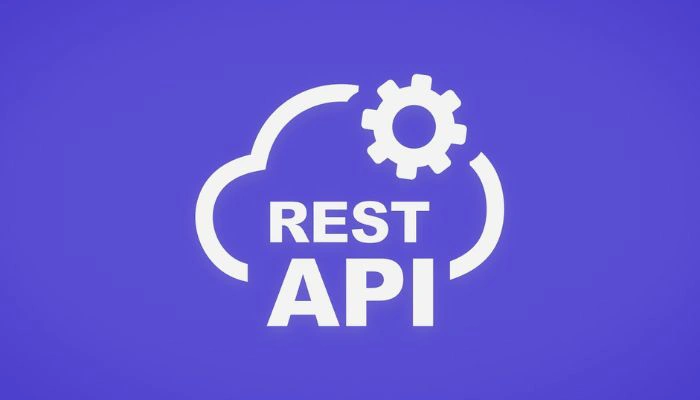How to Build a Digital Marketing Strategy [A Roadmap to Follow]
A robust online presence isn't just an advantage—it's a necessity. Businesses, both large and small, are constantly seeking ways to reach their target audiences, drive engagement, and ultimately, convert leads into loyal customers. The digital landscape is ever-evolving, making it challenging to navigate without a clear and well-defined plan. This is where a comprehensive digital marketing strategy comes into play, acting as your guiding star in the vast universe of online opportunities.
This article will serve as your definitive roadmap to building an effective digital marketing strategy. We'll delve into the essential components, step-by-step processes, and best practices that will empower your business to thrive in the digital realm. Whether you're a budding entrepreneur or an established enterprise looking to optimize your efforts, understanding and implementing a solid digital marketing strategy is paramount to achieving your business objectives, increasing brand visibility, and fostering meaningful customer relationships.
So, if you're ready to unlock the full potential of your online marketing efforts, read on. We'll equip you with the knowledge and actionable insights needed to construct a powerful digital marketing strategy that drives measurable results and positions your brand for long-term success.
Crafting Your Digital Marketing Strategy: The Foundation

Building a successful digital marketing strategy begins with a clear understanding of your current standing and where you want to go. This foundational stage involves introspection, research, and setting measurable goals. Without a solid foundation, your marketing efforts can become fragmented and ineffective, leading to wasted resources and missed opportunities.
1. Defining Your Goals and Objectives
Every successful endeavor starts with a clear destination. In digital marketing, this means setting SMART (Specific, Measurable, Achievable, Relevant, Time-bound) goals. Vague aspirations like "increase sales" are not enough. Instead, aim for something like "Increase website traffic by 20% through organic search within the next six months" or "Generate 100 qualified leads per quarter via social media campaigns."
Here's why defining SMART goals is crucial:
- Clarity: Everyone on your team understands what needs to be achieved.
- Measurability: You can track progress and determine success or failure.
- Motivation: Achievable goals provide a sense of accomplishment and encourage continued effort.
- Relevance: Goals should align directly with your overall business objectives.
- Accountability: A defined timeline creates urgency and responsibility.
Consider what you want your digital marketing efforts to accomplish. Is it brand awareness, lead generation, customer acquisition, customer retention, or a combination of these? Your goals will dictate the channels you prioritize and the tactics you employ.
2. Identifying Your Target Audience and Buyer Personas
Understanding who you're trying to reach is perhaps the most critical element of any digital marketing strategy. You wouldn't try to sell a snowboard to someone living in the Sahara, just as you wouldn't promote a luxury car to someone on a tight budget. Developing detailed buyer personas is essential.
Buyer personas are semi-ffictional representations of your ideal customers, based on market research and real data about your existing customers. They go beyond basic demographics to include:
- Demographics: Age, gender, income, location, occupation, education.
- Psychographics: Interests, hobbies, values, attitudes, lifestyle.
- Behaviors: Online habits, preferred social media platforms, search queries, purchasing patterns.
- Pain Points: What problems do they face that your product or service can solve?
- Goals: What are they trying to achieve?
By creating these detailed personas, you can tailor your messaging, content, and channel selection to resonate deeply with the individuals you want to attract. This personalization is key to engaging your audience and driving conversions. For instance, if your target audience spends most of their time on Instagram, focusing your efforts there with visually engaging content makes more sense than investing heavily in LinkedIn.
3. Conducting a Competitive Analysis
In any market, you're not operating in a vacuum. Your competitors are vying for the same audience and market share. A thorough competitive analysis allows you to understand their strengths, weaknesses, and the strategies they're employing. This isn't about copying them, but rather learning from their successes and failures, identifying gaps in the market, and finding ways to differentiate your own digital marketing strategy.
Consider the following aspects of your competitors' online presence:
- Website: User experience, content quality, SEO performance, calls to action.
- Content Marketing: Blog topics, content formats (videos, infographics), frequency of posting.
- Social Media: Platforms used, engagement levels, content themes, audience interaction.
- Paid Advertising: Ad copy, visuals, landing pages, keywords targeted.
- Email Marketing: Opt-in strategies, newsletter content, frequency.
- SEO: Keywords they rank for, backlink profiles, domain authority.
By analyzing this information, you can pinpoint opportunities to outperform them or discover underserved niches you can target. For example, if all your competitors are heavily focused on blog content, you might find an advantage by investing in video marketing, especially if your target audience consumes a lot of video.
Key Components of an Effective Digital Marketing Strategy

Once your foundation is laid, it's time to build the structure of your digital marketing strategy. This involves selecting and integrating various digital channels to create a cohesive and powerful online presence.
| Digital Marketing Component | Description | Key Metrics to Track |
| Search Engine Optimization (SEO) | Optimizing your website and content to rank higher in search engine results, driving organic traffic. | Organic traffic, keyword rankings, bounce rate, dwell time, conversion rate from organic search. |
| Content Marketing | Creating and distributing valuable, relevant, and consistent content to attract and retain a clearly defined audience. | Website traffic, social shares, lead generation, conversion rates, time on page. |
| Social Media Marketing | Using social media platforms to connect with your audience, build brand awareness, drive traffic, and generate leads. | Reach, engagement rate, follower growth, website clicks from social, lead generation. |
| Email Marketing | Building a list of subscribers and sending targeted emails to nurture leads, promote products/services, and build customer loyalty. | Open rate, click-through rate, conversion rate, unsubscribe rate, list growth. |
| Paid Advertising (PPC) | Running paid campaigns on search engines (Google Ads), social media (Facebook Ads), or other platforms to quickly reach specific audiences. | Click-through rate (CTR), cost per click (CPC), cost per acquisition (CPA), return on ad spend (ROAS), conversion rate. |
| Website Marketing | Your website serves as your digital hub, providing information, collecting leads, and facilitating sales. | Website traffic, unique visitors, page views, bounce rate, conversion rates, average session duration. |
Search Engine Optimization (SEO)
SEO is the bedrock of any long-term digital marketing strategy. It's the process of optimizing your website and content to rank higher in search engine results pages (SERPs) for relevant keywords. When potential customers search for products or services you offer, you want your business to appear prominently.
Key aspects of SEO include:
- Keyword Research: Identifying the terms and phrases your target audience uses to search for information, products, or services.
- On-Page SEO: Optimizing individual web pages to rank higher and earn more relevant traffic in search engines. This includes optimizing titles, meta descriptions, headings, content, and images.
- Off-Page SEO: Activities done outside of your website to improve its search engine ranking, such as building high-quality backlinks from other reputable websites.
- Technical SEO: Ensuring your website is crawlable and indexable by search engines, with a focus on site speed, mobile-friendliness, and site structure.
By investing in SEO, you're building a sustainable source of organic traffic, which is often the most cost-effective and highest-converting type of traffic over time.
Content Marketing
Content marketing is about creating and distributing valuable, relevant, and consistent content to attract and retain a clearly defined audience. This isn't just about selling; it's about providing solutions, answering questions, and establishing your brand as an authority in your industry.
Content can take many forms:
- Blog posts and articles
- Videos (tutorials, product reviews, vlogs)
- Infographics
- Ebooks and whitepapers
- Podcasts
- Case studies
- Webinars
A strong content strategy feeds into your SEO efforts by providing search engines with relevant, keyword-rich material to index. It also provides valuable assets for your social media and email marketing campaigns, giving you something meaningful to share and discuss. The goal is to build trust and rapport with your audience, nurturing them through their buyer's journey.
Social Media Marketing
Social media platforms are powerful tools for connecting with your audience, building brand awareness, and driving traffic and engagement. However, simply having a presence isn't enough; you need a strategic approach.
Key considerations for social media marketing:
- Platform Selection: Not all platforms are right for every business. Choose the platforms where your target audience is most active (e.g., LinkedIn for B2B, Instagram for visually-driven brands, TikTok for younger demographics).
- Content Strategy: Tailor your content to each platform's unique characteristics and audience expectations. What works on Twitter might not work on YouTube.
- Engagement: Don't just broadcast; interact with your audience. Respond to comments, answer questions, and participate in relevant conversations.
- Paid Social Advertising: Utilize paid social ads to reach a wider, more targeted audience beyond your organic followers. These platforms offer robust targeting options based on demographics, interests, and behaviors.
Social media provides an invaluable channel for humanizing your brand and fostering a community around your products or services.
Email Marketing
Email marketing remains one of the most effective digital marketing channels for nurturing leads and driving conversions. It allows for direct, personalized communication with your audience, building stronger relationships over time.
Components of a successful email marketing strategy:
- List Building: Implement strategies to ethically collect email addresses (e.g., website forms, lead magnets like ebooks or webinars).
- Segmentation: Divide your email list into smaller, more targeted groups based on demographics, interests, or behavior. This allows for highly personalized messaging.
- Automation: Set up automated email sequences for various purposes, such as welcome series for new subscribers, abandoned cart reminders, or post-purchase follow-ups.
- Content: Provide value in every email. This could be exclusive content, promotions, product updates, or helpful tips.
- Analytics: Track open rates, click-through rates, conversion rates, and unsubscribe rates to continually optimize your campaigns.
Email marketing allows you to maintain a direct line of communication with your most engaged audience members, guiding them through the sales funnel and fostering long-term loyalty.
Paid Advertising (PPC)
While organic strategies like SEO and content marketing build long-term sustainable traffic, paid advertising, or Pay-Per-Click (PPC), offers immediate visibility and highly targeted reach. This involves bidding on keywords for search engine ads or creating sponsored posts and ads on social media platforms.
Popular PPC platforms include:
- Google Ads: For search engine advertising (displaying ads on Google's search results pages) and display network advertising (ads on websites and apps).
- Social Media Ads: Platforms like Facebook Ads, Instagram Ads, LinkedIn Ads, and TikTok Ads allow precise targeting based on user data.
PPC can be highly effective for:
- Driving immediate traffic to specific landing pages.
- Promoting new products or services.
- Reaching highly specific customer segments.
- Testing new offers and messaging.
While it requires a budget, PPC can deliver a strong return on investment when managed effectively with continuous optimization based on performance data.
=> Get Marketing Services for your business
Measuring Success and Iteration

Building a digital marketing strategy isn't a one-time task; it's an ongoing process of monitoring, analyzing, and adapting. The digital landscape is constantly changing, with new technologies, algorithms, and consumer behaviors emerging regularly. To maintain effectiveness, your strategy must be flexible and responsive.
1. Setting Up Analytics and Tracking
Before launching any campaign, ensure you have proper analytics and tracking in place. Tools like Google Analytics are indispensable for monitoring website traffic, user behavior, conversions, and more. For social media, most platforms offer built-in analytics dashboards. Paid advertising platforms also provide detailed reporting.
Key metrics to track will vary depending on your specific goals, but generally include:
- Website Traffic: Total visitors, unique visitors, page views, traffic sources.
- Engagement: Bounce rate, time on page/site, social media likes, shares, comments.
- Conversions: Lead form submissions, purchases, downloads, sign-ups.
- Cost Metrics (for paid advertising): Cost Per Click (CPC), Cost Per Acquisition (CPA), Return on Ad Spend (ROAS).
2. Analyzing Data and Identifying Trends
Regularly review your analytics data to understand what's working and what isn't. Look for patterns and trends. For example, are certain blog posts driving more organic traffic than others? Are your Instagram ads performing better than your Facebook ads? Are users abandoning their carts at a particular stage?
This data-driven approach allows you to:
- Identify High-Performing Content/Channels: Double down on what's yielding the best results.
- Pinpoint Areas for Improvement: Address underperforming campaigns or content.
- Understand Customer Behavior: Gain deeper insights into how your audience interacts with your brand online.
- Optimize Budget Allocation: Shift resources to the most effective channels.
3. Iteration and Optimization
Based on your data analysis, make informed adjustments to your strategy. This iterative process of testing, learning, and refining is crucial for continuous improvement.
Examples of iteration and optimization:
- A/B Testing: Test different headlines, calls to action, ad creatives, or landing page designs to see which performs better.
- Keyword Adjustments: Refine your keyword strategy based on search performance and new trends.
- Content Updates: Refresh old blog posts with new information or improve their SEO.
- Audience Targeting Refinements: Adjust your audience targeting in paid campaigns for better efficiency.
- New Channel Exploration: Experiment with emerging platforms or marketing tactics if your data suggests your audience might be there.
Remember, a successful digital marketing strategy is not static. It's a living document that evolves with your business, your audience, and the ever-changing digital landscape.
Conclusion
Building a robust digital marketing strategy is not merely an option in today's competitive landscape; it's a fundamental requirement for growth and sustainability. By systematically defining your goals, understanding your audience, analyzing competitors, and strategically leveraging various digital channels, you can create a powerful roadmap that guides your business towards unparalleled online success. From the foundational elements of goal setting and audience research to the continuous optimization of your campaigns, every step plays a vital role in building brand awareness, generating leads, and fostering lasting customer relationships. Embrace this dynamic process, remain agile, and commit to continuous learning to stay ahead in the digital race. For all your Digital Marketing needs, ensure you visit Guru Solutions, the only place to get your devices fixed reliably and efficiently.









